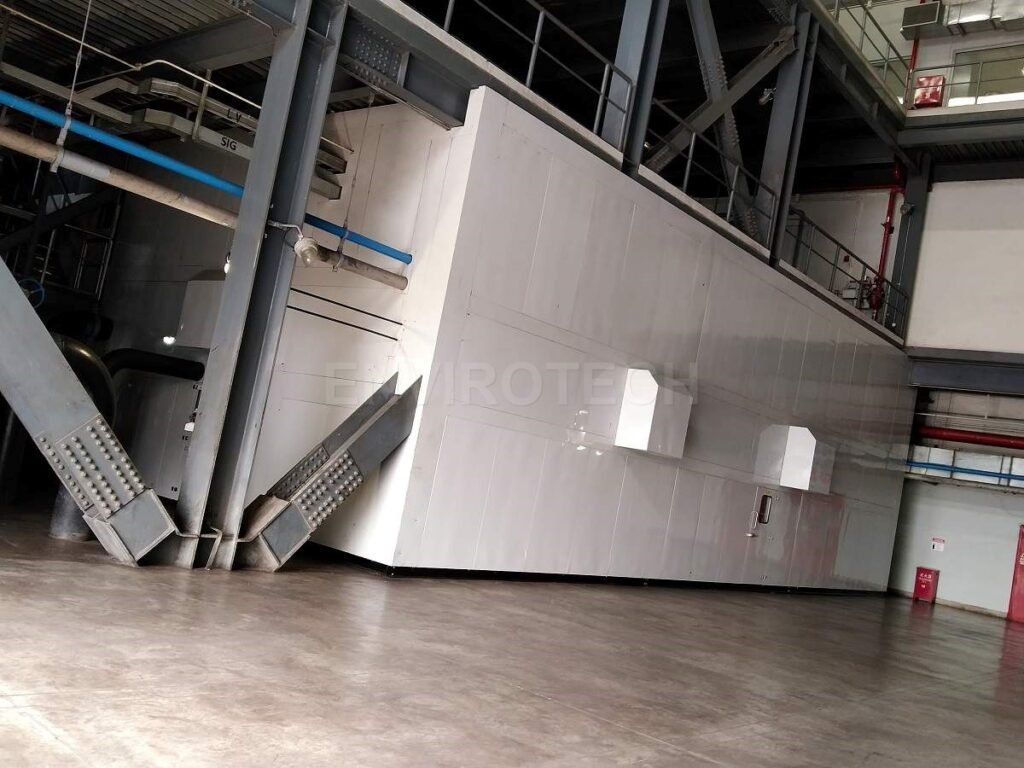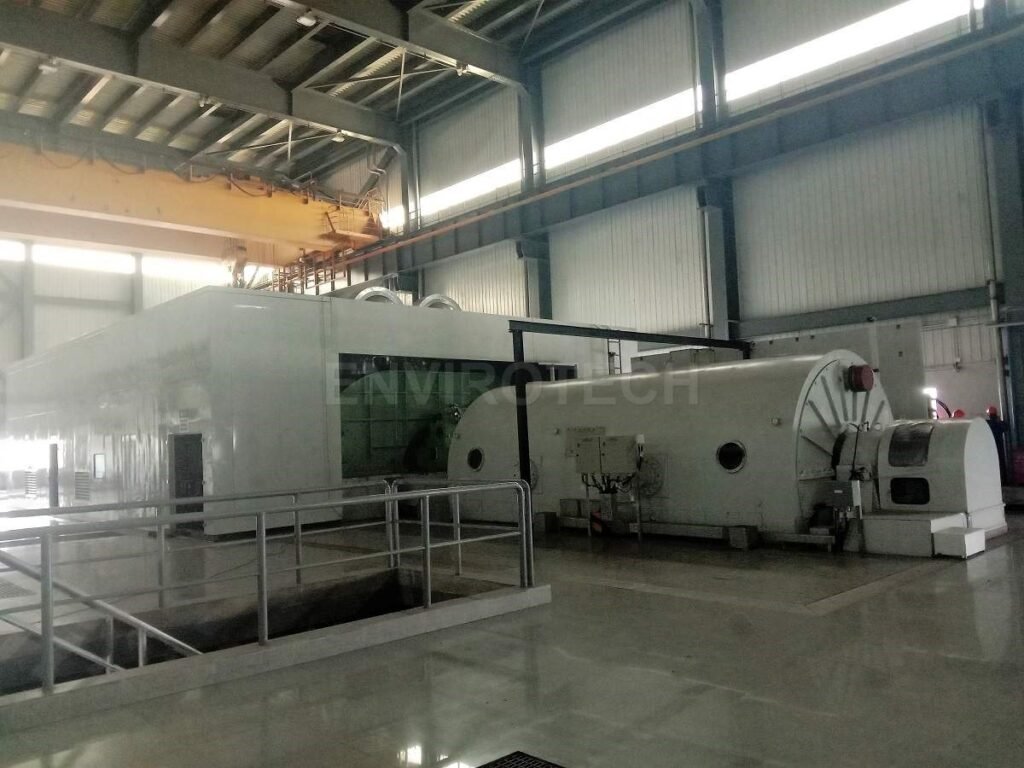GAS TURBINE ACOUSTIC ENCLOSURE | ACOUSTIC ENCLOSURE | SOUNDPROOF ENCLOSURE
Silencers are required for almost all installations that particularly include gas turbines and heat recovery steam generators. Our Gas Turbine Acoustic Enclosure, soundproof enclosures are specially designed to work in an environment where they are simultaneously exposed to high temperatures and to high-velocity turbulent flow.
We provide engineered Inlet Exhaust Silencers for Gas Turbines, DG sets Turbo Compressors and Turbo Blowers which include complete solutions in the field of Machinery filtration and acoustic solutions for Gas turbines and compressors.
Generally, the noise level from turbines is typically high, especially at low frequencies. So our Gas Turbine Silencers provide the ideal solution to keep noise at a manageable level while maintaining the operating efficiency of your turbine intake system.
Modern gas turbine power generation plants are often situated near residential areas, and it is essential to reduce the nuisance noise and vibration emissions from gas turbines. The acoustic enclosure is an energy-efficient, cost-effective, and noise-reducing solution for the problem of gas turbine noise.
GAS TURBINE ACOUSTIC ENCLOSURES’ line of silencers is designed to keep noise at a manageable level while maintaining the operating efficiency of your turbine intake system. Sound is a big deal. From traffic on the streets to the humming of machinery in your office, it can be hard to focus on what you’re doing with all that noise. That’s why our gas turbine acoustic enclosures come in handy.


Our gas turbine silencers are manufactured in any construction gauge, and in a variety of materials:
- Carbon steel
- Galvanized steel
- Stainless steel
In most cases, absorption silencers are used. Regarding the requirements, the design of the silencers is based on the working conditions and the noise data given.
The following elements have to be taken into consideration:
- Flow rate and temperature of the gas.
- Dynamic insertion loss.
- The transmission loss of the boiler, stack, and elbows.
- Secondary noise sources (burners).
- Mechanical strength of materials against vibrations and turbulent flow.
- Thermal strength of material against fast temperature changes.
